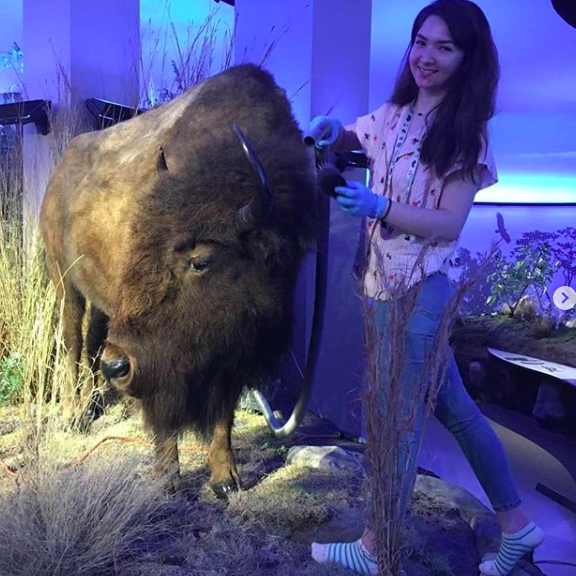News
Curating the Arts
September 10, 2019
September 10, 2019
Open gallery

This summer, I sought to engage myself in experiences that I felt were relevant to what I have been learning with my art history major, building on my previous internship during the spring semester at the Georgetown Art Center. I am grateful to have been accepted as an intern for the Curatorial Department of Prints & Drawings at the Museum of Fine Arts, Houston, for a 10-week internship under the two associate curators of this department, Dr. Dena Woodall and Laura Minton, a Ph.D. candidate at the University of Kansas.
Entering into this program, I knew almost nothing about printmaking or how prints fit into a museum’s collections, so the first two weeks were quite a learning curve to be able to move forward on bigger and more exciting projects. One of the first of these was being a tour guide for the Bayou Bend Summer History Camp, a program aimed at middle-school children to immerse them in colonial and 19th-century American history and living; once a week, I would show these kids the collection of prints at Bayou Bend, the historic Houston home of Ms. Ima Hogg (who has become a historic role model for me) and teach them the basics of early printmaking.
As I became more acquainted with the art of printmaking, I took on various tasks that reflect the multifaceted work of a museum curator (busy, busy, busy!), such as performing research and writing entry reports of new works that the museum acquires. More than just pulling books and articles, I had to actually reach out to these artists and speak with them—both an exciting and intimidating opportunity!—in order to provide the complete picture for future museum workers and guests. Likewise, I had a hand in helping the curators to prepare two future exhibits that will be shown in the brand-new Kinder building (set to open in 2020) focusing on the strengths of the abstract expressionist collection in the Prints department. Though at first I felt unsure about how I could contribute to such a large project, I realized that it is the little things that come together to make a successful exhibit, and every step, no matter how small it feels, crucially determines the outcome.
I had never worked with an institution so large and prestigious before, and of course beyond the intimidation, I found myself learning more and more every single day—not just about art but also about myself and my future.
I had never worked with an institution so large and prestigious before, and of course beyond the intimidation, I found myself learning more and more every single day—not just about art but also about myself and my future. I learned what kinds of art I enjoy the most (and the least), what it means to be a professional, and how I see myself within the art world. Though the work I’ve been doing is incredibly valuable and fulfilling, I realize that my interests are more suited to a smaller-scale institution, like a local gallery, and that my interest in art and visual culture is less about collecting and showing but about engaging the imagination and understanding how we think about and see ourselves in this moment. Most exciting for me is to be able to see in person the works I have been learning about for years and being able to understand them with my own eyes—I even have a list of several works of art that I will be choosing from to focus for my capstone research.















